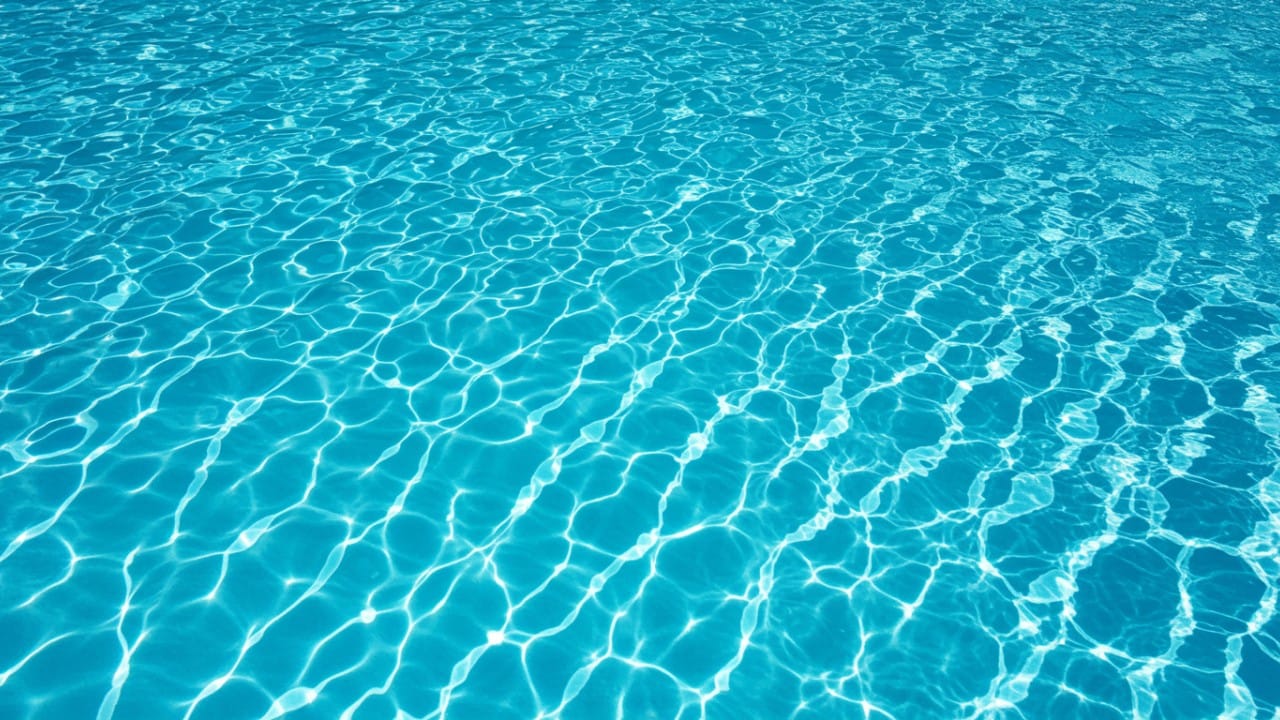Ozone Pool System: How It Works, Pros & Cons, Maintenance Guide

Every pool owner shares the same dream: crystal-clear, safe water that doesn't smell like chemicals or irritate your skin. We spend countless hours and dollars chasing that perfect balance. In the search for a better solution, many are turning to advanced technology, and one of the most talked-about options is an ozone sanitation system.
But what exactly is an ozone pool, and is it truly worth the significant investment?
This guide provides an honest and comprehensive breakdown of how ozone pools work. We'll cover the real-world benefits, the crucial drawbacks, and how the technology compares to other systems. By the end, you'll be able to decide if it's the right choice for your pool.
What Is an Ozone Pool System?
An "ozone pool" isn't a special type of pool. It's any swimming pool that has been equipped with an ozone generator—a device that creates and injects ozone (O3) into the water to purify it.
Why Ozone Pools Still Require Chlorine
Here is the most important fact to understand about ozone: it is a secondary sanitizer. It is incredibly powerful and effective at purifying the water that passes through the circulation system, but it is not a standalone solution. It works alongside a primary sanitizer to keep the main body of the pool safe.
Ozone quickly breaks down in water, reverting to oxygen within minutes. According to the CDC, ozone cannot provide residual disinfection, meaning a primary sanitizer like chlorine must always be maintained for continuous safety. This means by the time the water re-enters the pool, there is no active ozone left to sanitize new contaminants.
How Does a Pool Ozone Generator Work?
The science behind an ozone system mimics natural processes to keep your water clean.
An ozone molecule (O3) is an unstable form of oxygen. It works by releasing one of its oxygen atoms, which then collides with and destroys bacteria, viruses, body oils, and lotions. This process is called oxidation, and ozone is thousands of times faster at it than chlorine.
There are two main technologies used to create ozone for pools:
- Corona Discharge (CD): This method uses a high-voltage electrical discharge to create ozone. CD generators are more powerful and are the standard for most residential and commercial pools.
- Ultraviolet (UV): This method uses a specific wavelength of UV light to convert oxygen into ozone. UV systems are generally less powerful and better suited for smaller applications like spas.
How Ozone Is Injected Into Pool Water
The ozone generator is plumbed into your equipment pad. As water circulates, a small portion is diverted through a special injector that uses a vacuum to suck ozone gas from the generator and dissolve it into the water. This super-sanitized water then returns to your pool. The entire system only runs when your pool pump is on.
Pros and Cons of an Ozone Pool System
Like any major upgrade, an ozone system has powerful advantages and significant disadvantages.
Benefits:
- Achieve Superior Water Quality. Ozone's powerful oxidation creates exceptionally clear, "polished" water that often feels noticeably softer and silkier.
- Reduce Chemical Use by up to 90%. Studies under NSF/ANSI 50 standards show that a properly installed ozone pool system can reduce chlorine demand by up to 70–90%, significantly lowering chemical handling and storage requirements.
- Eliminate Chloramines and Irritation. Ozone destroys chloramines—the chemical byproducts responsible for the "chlorine smell," red eyes, and itchy skin.
Drawbacks:
- Expect a High Upfront Cost. A professionally installed ozone system is a major investment, often costing thousands of dollars, which is significantly more than traditional systems.
- Understand It Is Not a Standalone System. You will still need to buy and add a primary sanitizer like chlorine, which is a recurring task and expense.
- Factor in Ongoing Parts Replacement. Parts like UV bulbs or CD cells wear out every few years. They should be replaced according to NSF/ANSI 50 safety standards, ensuring the system continues to operate safely and effectively.
Ozone vs Other Systems — Visual Comparison
Many people try to compare ozone and saltwater systems, but they serve different purposes.
|
Feature |
Ozone Pool System |
Saltwater System (SWCG) |
Traditional Chlorine Pool |
|
Primary Role |
Secondary oxidizer |
Primary sanitizer generator |
Primary sanitizer |
|
Chlorine Use |
Reduces demand up to 70–90%¹ |
Generates chlorine automatically |
Full chlorine use required |
|
Best Use Case |
Paired with low-level primary sanitizer |
Standalone primary sanitation |
Standard pool sanitation |
|
Maintenance |
CD cells / UV bulbs replaced every 2–5 years² |
Salt cell maintenance, pH monitoring |
Regular chemical dosing and monitoring |
|
Water Quality |
Crystal-clear, soft feel |
Standard clarity, moderate chemical smell |
Can have chloramine buildup and irritation |
¹Source: NSF/ANSI 50
²Source: NSF/ANSI 50 maintenance guidelines
A saltwater pool is essentially a chlorine pool, as it utilizes a generator to produce its own chlorine from salt. It's a primary sanitation system. An ozone system is a secondary sanitation system. They aren't direct competitors.
Ozone and saltwater systems are actually highly complementary. When used together, the ozone system does most of the hard work. This allows you to run your salt cell at a significantly lower setting, which can dramatically extend its lifespan and provide the best of both worlds: the convenience of a salt system and the superior water quality of an ozone system.
How to Maintain an Ozone Pool
Owning an ozone pool simplifies some things but still requires a consistent maintenance routine.
How to Tell if Your Ozone Generator Is Working
Most generators have an indicator light showing they are on. The most telling sign, however, is your water chemistry: if your pool consistently holds a low chlorine level without needing frequent additions, your ozone system is doing its job.
Establishing a Routine Maintenance Schedule
The main benefit of an ozone system is maintaining pristine water with very low levels of residual chlorine. To remove the guesswork, pool owners can use smart water quality monitors. These devices provide 24/7 real-time readings of pH and sanitizer levels, often with mobile alerts. Using a monitor allows precise management of the chemical balance, ensuring the ozone system’s benefits are fully realized.
It’s crucial to remember that perfect water chemistry is only half of a clean pool. An ozone system is excellent at neutralizing microscopic contaminants, but it cannot remove physical debris, such as leaves or dirt.
This is why a robotic pool cleaner is highly recommended for an ozone system. Advanced models automate scrubbing and vacuuming of the pool surfaces, consistently removing physical contaminants and reducing overall sanitation workload. By consistently removing physical contaminants, it reduces the overall sanitation workload, allowing your ozone system and low-level sanitizer to work far more efficiently.
Long-term Maintenance Costs
|
Item |
Replacement Interval |
Estimated 10-Year Cost |
|
CD Cells / UV Bulbs |
Every 2–5 years |
$500–$1,200 |
|
Professional Checkups |
Annually |
$100–$200/year |
|
Chemicals |
Reduced by 70–90% |
$200–$400/year for backup sanitizer |
Deciding If an Ozone System Is Right for You
So, back to the original question: is it worth it? The answer depends entirely on your budget and priorities.
Who Should Invest in an Ozone System
- Those who prioritize the highest possible water quality and want that crystal-clear, soft-water feel.
- Anyone who is sensitive to chloramines and wants to eliminate the chemical smell and irritation.
- Owners who are willing to make a significant upfront investment for long-term benefits.
Who Should Consider Other Options
- Anyone on a strict budget for pool upgrades.
- Owners who want the simplest, all-in-one sanitation solution possible.
- Those looking for a completely "hands-off" or zero-maintenance system.
Ultimately, an ozone system is a premium product for pool owners who want the best water quality available and are willing to invest to get it.
Frequently Asked Questions About Ozone Pools
Q: Do I still need chlorine in an ozone pool?
A: Yes. The CDC recommends that ozone be used as a secondary sanitizer, and a low level of primary sanitizer like chlorine (0.5–1.0 ppm) must be maintained to ensure continuous pool safety.
Q: Is an ozone system better than a saltwater system?
A: They serve different purposes, so one isn't necessarily "better." A saltwater system generates chlorine (a primary sanitizer), while an ozone system is a powerful oxidizer (a secondary sanitizer). They are not competitors; in fact, they are highly complementary and work best together to provide the highest quality water with the lowest chlorine levels.
Q: What are the main disadvantages of an ozone pool?
A: The three main disadvantages are:
- High Upfront Cost: A professionally installed system is a significant investment.
- Not a Standalone System: You still have the task and expense of using a primary sanitizer.
- Ongoing Maintenance: Consumable parts like UV bulbs or CD cells must be replaced every few years.
Q: Can I add an ozone generator to my existing pool?
A: Yes. Retrofitting an existing chlorine or saltwater pool with an ozone generator is a very common upgrade. A qualified pool professional can add the necessary components to your plumbing with no need to drain or make major alterations to the pool itself.
Q: What is an ozone pool?
A: An ozone pool is a standard swimming pool that uses an ozone generator to purify the water. The generator injects ozone (O3), a powerful oxidizer, into the pool's plumbing to destroy bacteria, viruses, and other contaminants. It is a secondary sanitizer and must be used with a low level of a primary sanitizer like chlorine.
Q: Is ozone better than a saltwater pool?
A: They serve different purposes, so one isn't inherently "better." A saltwater system is a primary sanitizer that creates its own chlorine. An ozone system is a secondary oxidizer that reduces the amount of chlorine needed. They work best as partners; combining them provides superior water quality and can extend the life of the salt cell.
Q: What are the disadvantages of an ozone pool?
A: The main disadvantages are the high upfront cost for the equipment and professional installation, the fact that it is not a standalone system and still requires a primary sanitizer like chlorine, and the ongoing cost of replacing consumable parts like CD cells or UV bulbs every few years.
Q: Is an ozone system for a pool worth it?
A: For many pool owners, it is worth the investment. An ozone system is worth it if you prioritize the highest possible water quality, want to drastically reduce chemical usage (by up to 90%), and want to eliminate the harsh smell and irritation caused by chloramines. However, it may not be worth it for those on a strict budget or seeking the simplest possible setup.

